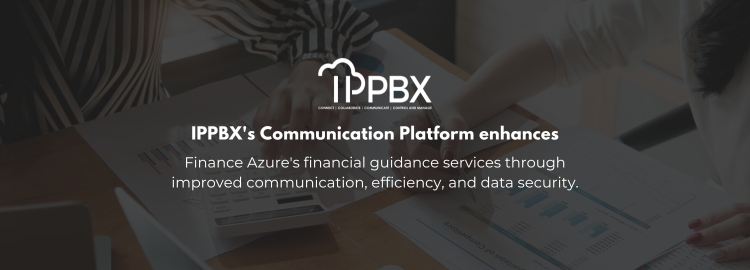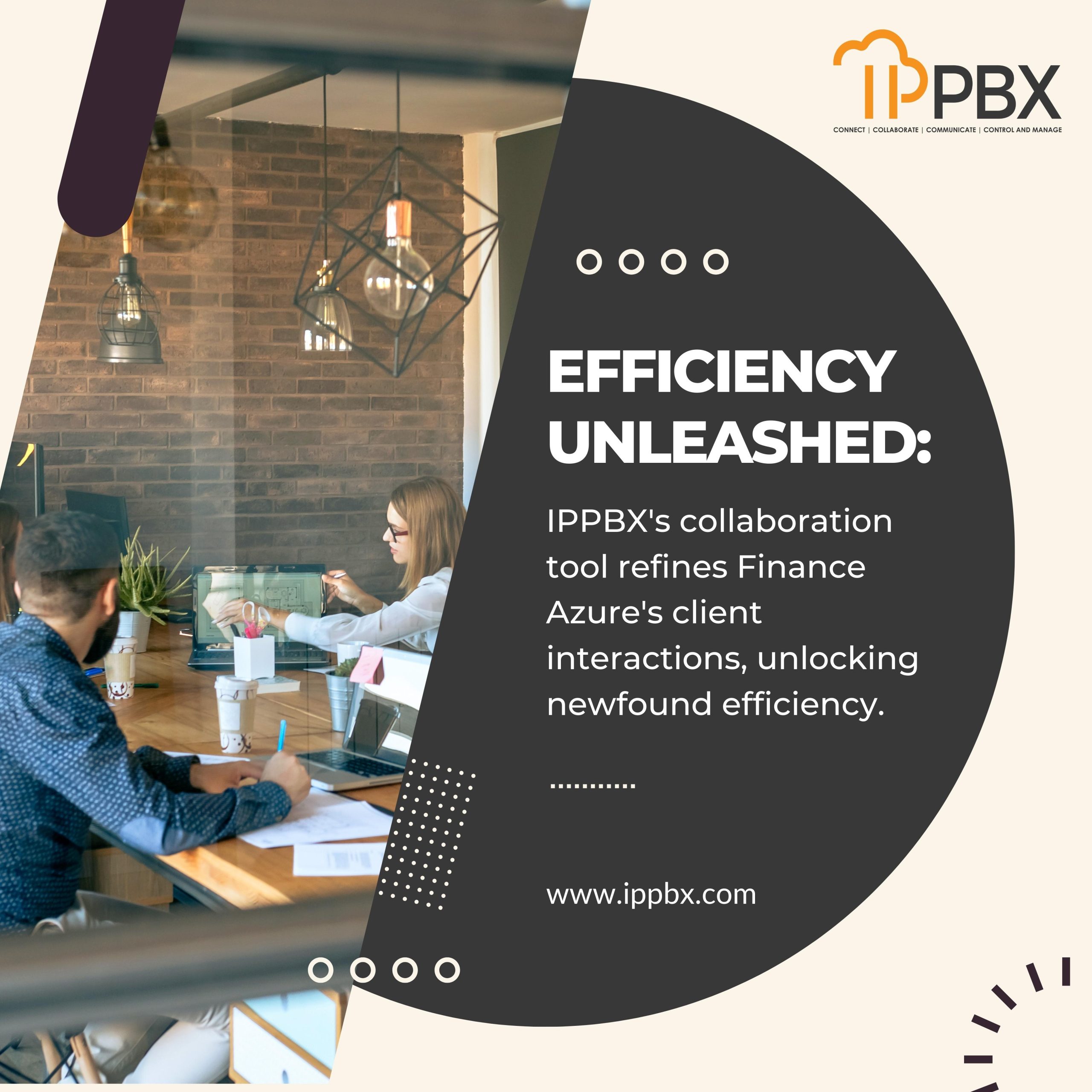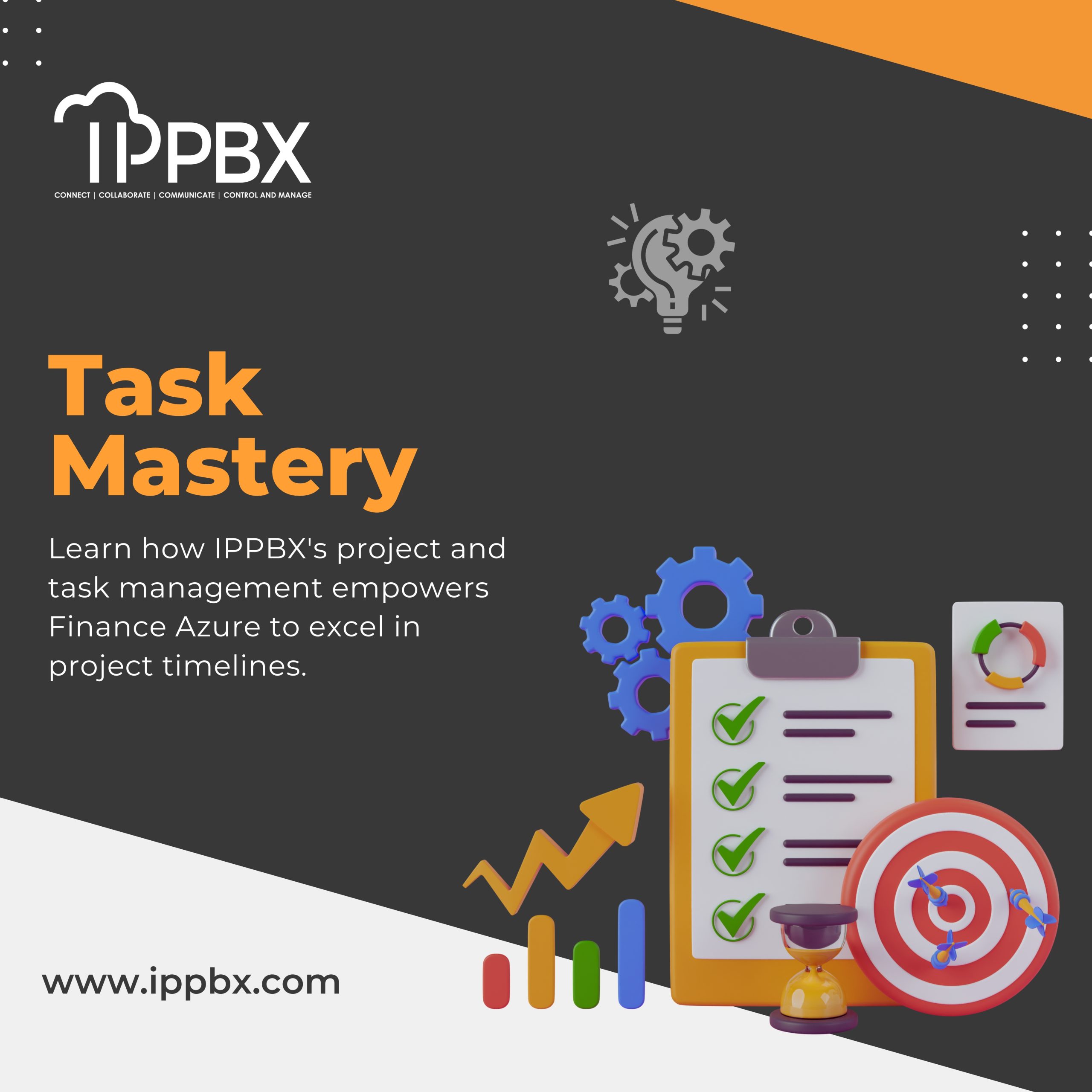Business
Finance Azure Elevates Business Operations with IPPBX’s Integrated Business Platform

In today’s fast-paced business environment, seamless communication and collaboration tools aren’t just luxuries, they’re necessities. As more organizations recognize this, they’re turning to robust solutions that offer more than just basic connectivity. IPPBX, a renowned service provider, stands out in this domain by offering an integrated business platform, tailor-made for modern businesses that require comprehensive solutions.
One company that has astutely recognized the advantages of IPPBX’s offerings is Finance Azure. This institution has long prided itself on helping individuals and businesses strike a balance between immediate needs, long-term objectives, and unforeseen circumstances. And now, with the integration of IPPBX’s suite of tools, Finance Azure has exponentially enhanced its service delivery.
The cornerstone of IPPBX’s appeal lies in its innovative collaboration tool. It isn’t merely a communication medium; it’s a hub for all things business. Imagine a single portal that not only provides a phone line but also allows users to store, share, edit, and create a range of documents from Word to PowerPoint. Its capacity to enable Visio-like flow chart creations, which makes it possible to easily visualize and comprehend complex data, further demonstrates this versatility.

IPPBX’s collaboration tool refines Finance Azure’s client interactions
But it doesn’t stop there. The integrated business platform extends its functionalities to calendar and appointment scheduling, revolutionizing the way Finance Azure interacts with its clients. Now, users can effortlessly send appointment links, allowing clients and associates to directly book time slots. This feature ensures that Finance Azure remains accessible to those who need financial guidance, reinforcing their commitment to customer-centric service.
And for a firm like Finance Azure, where project timelines and tasks are paramount, IPPBX’s project and task management tools have proven invaluable. By streamlining processes and enhancing team collaboration, these features ensure that Finance Azure stays ahead of the curve, ensuring that every financial journey they oversee is meticulously planned and executed.
However, where the integrated business platform truly shines is in its state-of-the-art file sharing capabilities. In the world of finance, the security of sensitive data is paramount. IPPBX recognizes this, offering advanced file sharing where users can effortlessly share files both within and outside the organization. The optional password protection and video verification features ensure that data integrity is never compromised, a feature that Finance Azure finds crucial for their operations.

Task Mastery
Further augmenting this suite of tools is chat and video meeting functionality, allowing internal and external communication to be as seamless as possible. In an industry where clear communication can be the difference between financial success and mishap, this feature ensures that Finance Azure always remains a step ahead.
Lastly, in an age where multilingual communication has become a norm, the call transcription feature that supports over 90 languages is nothing short of a game-changer. This ensures that Finance Azure, with its diverse clientele, can serve a global audience without any language barriers.
With such a comprehensive array of tools at their disposal, it’s no surprise that Finance Azure has seamlessly integrated IPPBX’s platform into their operations. The symbiotic relationship between Finance Azure’s financial expertise and IPPBX’s integrated business platform has resulted in an unparalleled service delivery mechanism.
In conclusion, the collaboration between Finance Azure and IPPBX exemplifies the future of business operations. It’s a testament to how advanced communication tools, when paired with industry expertise, can lead to unmatched service quality. For institutions like Finance Azure, IPPBX’s integrated business platform has not only streamlined operations but also fortified their position as leaders in financial guidance. This alliance symbolizes the power of modern technology and industry expertise, and it sets a benchmark for others to follow.
Business
Top SEO & PPC Digital Marketing Agency in Pune

In a digital age, where the online landscape is continually evolving, finding the right digital marketing agency in Pune can feel daunting. With an abundance of agencies promising superior rankings, increased leads, and high ROI, how do you identify which ones genuinely deliver results? Today’s businesses demand more than just traffic or clicks; they seek quality leads, increased sales, and trust in their brand.
This guide aims to clarify:
- What defines a “top” digital marketing agency
- How to assess SEO and PPC performance
- The types of digital marketing agencies in Pune you can place your trust in
-
Selecting the appropriate agency that matches your business objectives
If you’re serious about accelerating your business growth, this article will help save your time and resources.

The Growing Demand for Digital Marketing Agencies in Pune
Pune is rapidly evolving into a thriving business and IT hub. Every day, new startups, local brands, eCommerce platforms, and service-oriented companies make their mark in the city. This surge in new entrants intensifies the online competition, prompting many businesses to seek expert assistance in digital marketing.
Here are some reasons businesses are increasingly partnering with digital marketing agencies in Pune:
- Consumer Behavior: Most potential customers engage in online searches before making purchases. A robust online presence is crucial to influence their buying decisions.
- Instant Leads through Paid Ads: With paid advertising, businesses can generate immediate leads rather than waiting for organic traffic to build gradually.
- Building Brand Trust with Social Media: An effective social media strategy enhances brand recognition and trust among consumers.
- Sustainable Traffic through SEO: While paid ads bring quick visibility, SEO offers a long-term strategy for sustained traffic.
- Influence of Online Reviews: Reviews and testimonials have a significant impact on potential customers’ decisions. Thus, managing online reputation is vital.
- Complexity of Online Marketing: Navigating the digital landscape can be challenging without expert guidance and support.
What Determines a Digital Marketing Agency’s Excellence in SEO and PPC
Not every agency claiming to offer SEO and PPC services is truly an expert. A genuine top-tier agency prioritizes strategy, data analysis, and measurable results over mere promises. Here are essential attributes that define a high-performing agency:
- Proven Case Studies: Look for agencies that can showcase successful SEO strategies and campaigns.
- Certified Professionals: Ensure that the agency employs certified Google Ads specialists and other industry-recognized experts.
- Transparency and Reporting: A credible agency offers clear reporting on performance metrics and campaign effectiveness.
- Ethical Practices: Committed to using ethical SEO techniques that improve visibility sustainably.
- Conversion-Focused Campaigns: Rather than focusing solely on traffic, the agency ensures that campaigns are designed to drive conversions.
- Long-Term Relationships: Look for agencies that build lasting relationships with their clients, demonstrating mutual trust and collaboration.
A reliable agency focuses on fostering stable growth rather than chasing quick rankings.
Digital Marketing Agencies in Pune Delivering Excellent SEO and PPC Results
Many agencies in Pune offer digital marketing services, but only a select few distinguish themselves with a data-driven approach that generates consistent results. Top-performing agencies typically cater to:
- Local businesses
- IT companies
- Healthcare organizations
- Educational institutions
- eCommerce platforms
- Real estate firms
Their strength lies in crafting tailor-made strategies that align with the unique needs of each business, rather than offering one-size-fits-all packages.
Key SEO Services Offered by Top Digital Marketing Agencies in Pune
A robust SEO strategy is not universal; it must be customized to reflect individual business objectives. Essential SEO services often include:
- Website SEO Audits: Comprehensive evaluations of your website to identify areas for improvement.
- Keyword Research and Mapping: Identifying relevant keywords that align with user search intent.
-
On-Page SEO Optimization: Improving single web pages to achieve better rankings and attract more relevant visitors
- Technical SEO Fixes: Addressing technical issues that may hinder search engine bots from indexing your site.
- Content Optimization: Refining website content to engage visitors and improve search rankings.
- Local SEO: Enhancing visibility on platforms like Google Maps for better local searches.
- High-Quality Link Building: Establishing authority through credible backlinks.
These services collectively aim to improve your website’s rankings and organic traffic.
Key PPC Services Offered by Reliable Agencies
PPC advertising provides immediate visibility and the potential for fast leads. However, without careful execution, it can lead to wasted resources. Trustworthy agencies provide:
- Google Ads Setup and Management: Comprehensive planning and execution of ad campaigns.
- Various Ad Types: Expertise in search ads, display ads, YouTube advertising, and shopping ads for eCommerce initiatives.
-
Landing Page Enhancement: Optimizing landing pages to boost conversion rates
- Conversion Tracking: Continuously monitoring and optimizing ad performance to maximize ROI.
- A/B Testing for Ads: Experimenting with different ad formats to find the most effective approach.
When agencies focus on ROI, they demonstrate real value beyond superficial impressions.
Evaluating Digital Marketing Agencies in Pune: A Simple Checklist
Choosing the wrong agency can waste your budget and valuable time. Here’s a checklist to help you identify trustworthy agencies:
- Do they provide real results?
- Is their strategic approach clearly articulated?
- Are they transparent with monthly performance reports?
- Do they understand the specifics of your industry?
- Are they focused on conversion rates rather than just traffic?
A “yes” to most of these questions indicates that you are on the right path.
Real-World Example: A Success Story in Pune
Consider a Pune-based interior design business struggling with online lead generation. They decided to invest in both SEO and Google Ads through a reputed agency. Within just six months, they experienced:
- A 320% increase in website traffic
- Improved visibility on Google Maps
- A 48% reduction in cost per lead
- Doubled monthly project bookings
This example showcases the powerful impact that the right blend of SEO and PPC can have on a business’s success.
The Synergy of SEO and PPC
Some businesses opt for either SEO or PPC, but the most effective brands leverage both strategies. Here’s why:
- SEO builds long-term traffic, fosters brand trust, and reduces future marketing costs.
- PPC delivers immediate traffic, targets ready-to-buy users, and allows for budget control.
Together, they create a balanced strategy that promotes stable growth.
Common Mistakes When Hiring a Digital Marketing Agency
Avoid making these costly mistakes that can hinder your marketing efforts:
- Choosing the cheapest agency: Quality often correlates with investment.
- Believing guaranteed rankings: No agency should promise top rankings without a strategy.
- Ignoring reporting quality: Regular updates are crucial for assessing performance.
- Neglecting past client results: Always check prior successes or client testimonials.
- Misunderstanding contract terms: Be clear on what you are signing up for.
Making informed, cautious choices can save you money and frustration in the long run.
Actionable Tips Before Signing with a Digital Marketing Agency
Before finalizing your decision, consider the following steps:
- Request a comprehensive website audit
- Ask for examples of an SEO plan
- Check for Google Ads case studies
- Understand your monthly deliverables
- Inquire about ROI tracking methods
These steps will ensure a transparent and performance-oriented relationship.
Who Should Partner with Digital Marketing Agencies in Pune?
Hiring a digital marketing agency is ideal for:
- Startups eager for rapid growth
- Local businesses needing consistent leads
- eCommerce brands aiming for increased sales
- Service providers lacking online visibility
- Companies struggling to engage customers online
Professional support can accelerate and secure your growth in a competitive landscape.
Final Thoughts: Choosing the Right Digital Marketing Agency in Pune
The reality is that there is no singular “perfect” agency for everyone. The best digital marketing agencies in Pune are those that:
- Truly understand your business needs
- Focus on ROI rather than vanity metrics
- Employ ethical SEO methods
- Develop scalable PPC strategies
- Communicate transparently and consistently
Your journey to digital success relies heavily on choosing the right partners who understand your unique challenges.
If you are serious about achieving stable rankings, quality leads, and genuine business growth, investing in expert digital marketing services is a crucial decision you can make today.
Frequently Asked Questions (FAQ)
Q1: What is the cost of SEO services in Pune?
SEO pricing can vary based on competition, keyword difficulty, and specific business goals. On average, it typically falls between ₹10,000 and ₹50,000+ monthly.
Q2: How long does it take to see results from SEO?
Generally, SEO may take 3–6 months to yield stable results, with more competitive sectors requiring longer times.
Q3: Is PPC more effective than SEO?
Neither is definitively better; PPC offers instant results, while SEO builds long-term visibility. Using both together is the most effective strategy.
Q4: How can I verify a digital marketing agency’s performance?
Request live website ranking reports, Google Ads conversion statistics, traffic growth evidence, and references from previous clients.
Q5: Do local businesses benefit from SEO and PPC?
Absolutely. Local SEO and Google Ads are indispensable for clinics, shops, service providers, and real estate businesses.
Call to Action
If you’re looking to expand your brand online, now is the perfect time to partner with one of Pune’s trusted digital marketing agencies that deliver authentic SEO and PPC outcomes. Making the right choice today can multiply your business success tomorrow!
Business
Perfect Wedding Venue in Lucknow: Guide to Greenfields Gardens
Business
Christmas Gift Ideas for 2025 That Will Wow Your Loved Ones

Christmas is around the corner, and finding the perfect gift can feel overwhelming. Whether you’re looking for thoughtful presents for your loved ones or trendy surprises for your friends, we’ve curated the ultimate list of best Christmas gift ideas for 2025. From unique gadgets to luxurious treats, there’s something for everyone.

Why Choosing the Right Christmas Gift Matters
Gift-giving is more than just tradition; it’s a way to show love, appreciation, and thoughtfulness. Choosing the right gift can make your holiday memorable and strengthen bonds with family, friends, and partners.
Christmas presents for girlfriend or christmas gifts for wife require extra thought, while gifts for friends or colleagues may lean towards fun and practical.
Best Christmas Gift Ideas for Her
1. Personalized Jewelry
A necklace or bracelet engraved with her name or initials is timeless. Personalized gifts show extra effort and love.
2. Designer Handbags
A stylish handbag adds elegance and makes her feel special during the festive season.
3. Spa Gift Sets
Treat her to relaxation with luxurious bath bombs, scented candles, and skincare products.
4. Smart Watches
Combine fashion and functionality with smartwatches that track health and activity.
5. Cozy Winter Wear
Soft scarves, gloves, and cardigans are perfect for keeping her warm and stylish.
6. Perfume Sets
Choose fragrances that match her personality; classic perfumes never go out of style.
7. Personalized Mugs and Cushions
Add her favorite quote or photo for a cute and memorable gift.
8. Fitness Kits
Yoga mats, resistance bands, and wellness trackers make thoughtful fitness gifts.
9. Subscription Boxes
Monthly surprises like beauty boxes, book subscriptions, or gourmet treats keep the joy alive all year.
10. Home Décor Items
Stylish lamps, photo frames, or wall art can brighten her living space.
Top Christmas Presents for Women
11. Elegant Watches
Classic watches remain a timeless choice for women of all ages.
12. Designer Sunglasses
Perfect for style-conscious women who love fashion accessories.
13. DIY Craft Kits
Encourage creativity with pottery kits, painting sets, or embroidery packs.
14. Luxury Chocolates
Premium chocolate boxes are a sweet indulgence during the festive season.
15. Cozy Slippers
Comfortable and chic slippers are a simple yet thoughtful gift idea.
16. Personalized Calendars
Add family photos and memorable moments to a custom calendar.
17. High-Quality Skincare
Gift her skincare kits with moisturizers, serums, and masks.
18. Wireless Earbuds
Perfect for music lovers and those who enjoy hands-free convenience.
19. Fitness Trackers
Encourage a healthy lifestyle with the latest wearable technology.
20. Elegant Jewelry Boxes
Help her keep her jewelry organized in style.
Unique Xmas Gifts for Her That Stand Out
21. Custom Star Maps
Show the night sky from a significant date like an anniversary or birthday.
22. Personalized Phone Cases
Trendy and functional, these cases can feature photos or initials.
23. Smart Home Gadgets
From smart speakers to smart lights, technology meets convenience.
24. Designer Scarves
Luxury scarves add sophistication and warmth.
25. Scented Candle Collections
Relaxing and fragrant candles make cozy gifts for the holiday season.
26. Photo Books
Compile memories from the year into a beautiful personalized photo book.
27. Handmade Jewelry
Unique, handcrafted pieces make every gift feel special.
28. Gourmet Gift Baskets
Include chocolates, cheeses, and wines for a delicious surprise.
29. Stylish Tote Bags
Perfect for everyday use, travel, or shopping.
30. Personalized Stationery Sets
For those who love to write, a custom notebook is thoughtful and useful.
Christmas Gifts for Girlfriend That Will Melt Her Heart
31. Romantic Jewelry
Rings, bracelets, or necklaces that reflect your love story.
32. Surprise Weekend Getaways
Plan a memorable trip to celebrate your bond.
33. Personalized Love Notes
Handwritten notes in a jar or box for daily surprises.
34. Custom Photo Frames
Frame your favorite moments together for a sentimental gift.
35. Luxury Perfume
Choose her favorite scent or a new fragrance she’ll adore.
36. Cozy Blanket Sets
Soft, high-quality blankets for chilly winter nights.
37. Subscription to Her Favorite Magazine
A thoughtful gift that keeps on giving throughout the year.
38. Stylish Boots
Trendy winter boots can be both fashionable and practical.
39. Handmade Chocolates
Add a personal touch with artisanal chocolate selections.
40. Personalized Jewelry Box
A beautiful keepsake for her most cherished jewelry pieces.
Christmas Gifts for Wife That She Will Cherish
41. Designer Dresses
Surprise her with elegant dresses she’ll love to wear for festive occasions.
42. Spa Experience Vouchers
Gift her a day of pampering at a luxury spa.
43. Smart Gadgets
From smart watches to home assistants, tech gifts are practical and fun.
44. Personalized Kitchenware
Custom cutting boards, mugs, or aprons for cooking enthusiasts.
45. Elegant Earrings
Delicate or statement earrings are always a hit.
46. Luxury Handbags
A designer handbag can make her feel special and appreciated.
47. Framed Art Prints
Beautiful wall art to enhance the home décor.
48. High-Quality Makeup Kits
Ensure she has her favorite cosmetics for the holiday season.
49. Cozy Pajama Sets
Soft, stylish pajamas for a relaxing winter evening.
50. Personalized Christmas Ornaments
Create lasting memories with custom ornaments for your home tree.
How to Choose the Best Christmas Gift
-
Consider Their Interests – Think about hobbies, lifestyle, and favorite things.
-
Personalize When Possible – Customized gifts feel more thoughtful and meaningful.
-
Stay Within Your Budget – You can find amazing gifts at any price range.
-
Plan Ahead – Order in advance to avoid last-minute stress.
Final Thoughts
Choosing the perfect Christmas present ideas doesn’t have to be stressful. Whether it’s the best Christmas gift for her, xmas gifts for her, or thoughtful Christmas gift ideas for her, this list of 50 amazing options has something for everyone.
Make your loved ones feel special this festive season with gifts that come from the heart. For hassle-free shopping and timely delivery, check out OyeGifts for an amazing collection of Christmas gifts for women, Christmas presents for girlfriend, and Christmas gifts for wife.
-
Business2 years ago
Cybersecurity Consulting Company SequelNet Provides Critical IT Support Services to Medical Billing Firm, Medical Optimum
-
Business2 years ago
Team Communication Software Transforms Operations at Finance Innovate
-
Business3 years ago
Project Management Tool Transforms Long Island Business
-
Business2 years ago
How Alleviate Poverty Utilized IPPBX’s All-in-One Solution to Transform Lives in New York City
-
health3 years ago
Breast Cancer: The Imperative Role of Mammograms in Screening and Early Detection
-
Sports3 years ago
Unstoppable Collaboration: D.C.’s Citi Open and Silicon Valley Classic Unite to Propel Women’s Tennis to New Heights
-
Art /Entertainment3 years ago
Embracing Renewal: Sizdabedar Celebrations Unite Iranians in New York’s Eisenhower Park
-
Finance3 years ago
The Benefits of Starting a Side Hustle for Financial Freedom
































